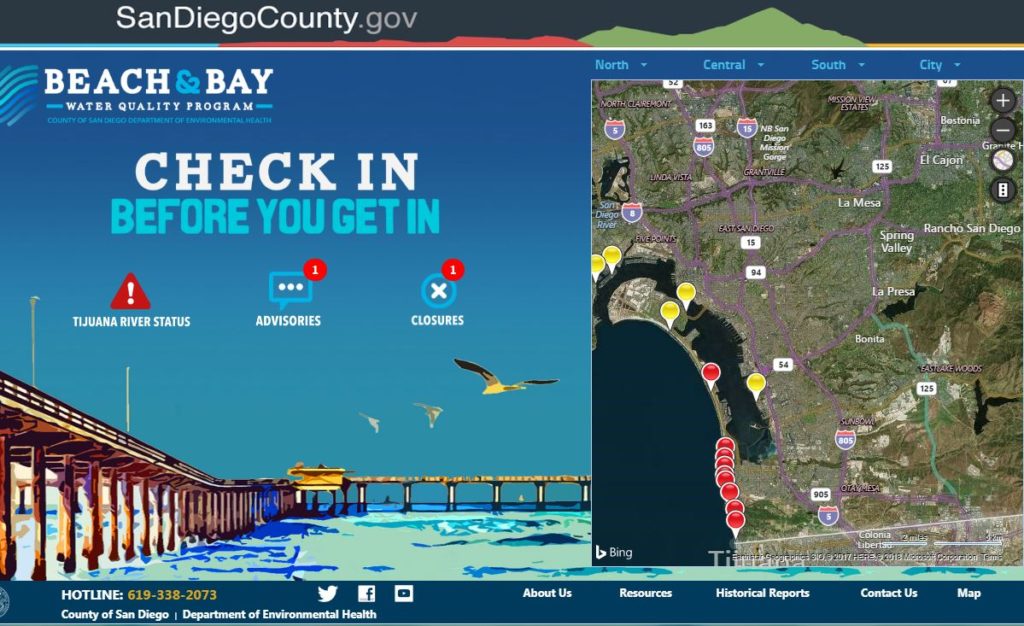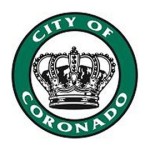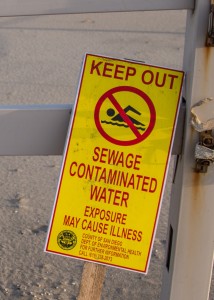
We got rain last week – over 1.25 inches at San Diego International Airport. Which is great, from the perspective of watering the parched earth. But, for ocean-goers, the rain brings a negative side as well – pollution.
As we reported in November, the Tijuana River carries water downstream from Mexico into the ocean in Imperial Beach. That river bed is usually dry and only flows (or, is only supposed to flow) when there is rain. That all sounds fine until you learn that when the rain water builds up in the river bed, it carries all of the garbage, sediment, and industrial pollution that has been thrown into the bed. That then flows into the ocean in Imperial Beach and, depending on where the currents go, it flows away in the ocean – or up the coast to Coronado and sometimes further.
Additionally, raw sewage gets dumped directly into the Tijuana River when it rains. This became most apparent in February of 2017 when millions of gallons of raw sewage were spilled directly from Tijuana into the river and, ultimately, into the ocean in Imperial Beach. Last week, according to the activist group Citizens Against Sewage, another billion gallons of “flow” came through the river carrying all manner of visible debris and also, less visible pollution.
After it rains, citizens are advised by the County of San Diego to not enter the water for 72 hours. According to the San Diego County Department of Environmental Health Water Quality Website: “General (Rain) Advisories are issued when rainfall equal to or greater than 0.20 inch is received in coastal or valley areas of San Diego County… The Department of Environmental Health (DEH) advises beach users to avoid contact with ocean and bay waters for a period of 72 hours after rainfall ends.”
Last week, however, the County actually closed beaches (as opposed to advising they not be used). The County closes beaches whenever “the Tijuana River discharges to the ocean as the Tijuana River is known to be impacted with sewage.”
The closure was not surprising for Imperial Beach. In fact, it has faced beach closures at a much higher rate than other San Diego County beaches over the last ten years – more than 400 times. It was somewhat more surprising that Silver Strand Beach was also closed. That beach has been closed over the same period at about a quarter the rate of Imperial Beach.
Many Coronadans then wondered when they might, once again, enter the water safely at Silver Strand. And, where they could go to for quick and reliable information on the water quality of the beach. Local surfer, Daron Case, asked on January 13, “My beach at the Cays (Silver Strand State Beach) is still reflected as closed per [DEH]. I just went to City of Coronado’s website to check the water quality lab tests results for North Beach… the last lab result test available to view is December 27th last year. This doesn’t help much to evaluate current conditions after the spill this week… Why aren’t Coronado’s lab results this year reflected in the website?”

The City Manager’s Office recommends use of the San Diego County website for knowing beach water quality. While presumably the City of Coronado could do its own testing (and does at times), it relies upon the testing done by the County for beach closures and advisories, for the most part.
We contacted the City Manager’s office to understand the role the City of Coronado plays in monitoring and reporting water quality. According to Janine Zuniga, Senior Management Analyst, “When the beach is closed, it is because the County [as opposed to the City of Coronado] closed it.” She indicated that the City of Coronado does not routinely test waters after a rain event – “Only if there is a reported spill or someone witnesses contamination in some way.” She says this is because “it’s already being done. It would just be repetitious and expensive.”
 When asked about the water quality lab tests that are listed on the City Website, Zuniga said that they were updated as results come in and that the new data from January were updated on Thursday, January 18, of this week. Prior to this time, the most updated results for North Beach were from December 27.
When asked about the water quality lab tests that are listed on the City Website, Zuniga said that they were updated as results come in and that the new data from January were updated on Thursday, January 18, of this week. Prior to this time, the most updated results for North Beach were from December 27.
So, as we reported earlier, still the best resource for knowing the reported water quality at the beach is the County website (www.sdBeachInfo.com). Bear in mind however, that reporting lags testing fairly significantly – it usually takes from 48-96 hours to get results back (still better than the several weeks it took to get the North Beach test results on the city website). The significant lag is a big problem that remains to be resolved.
And, of course, the real issue is the Tijuana River sewage. That is a problem many are working on in numerous ways. We will report more on this in the coming weeks.





